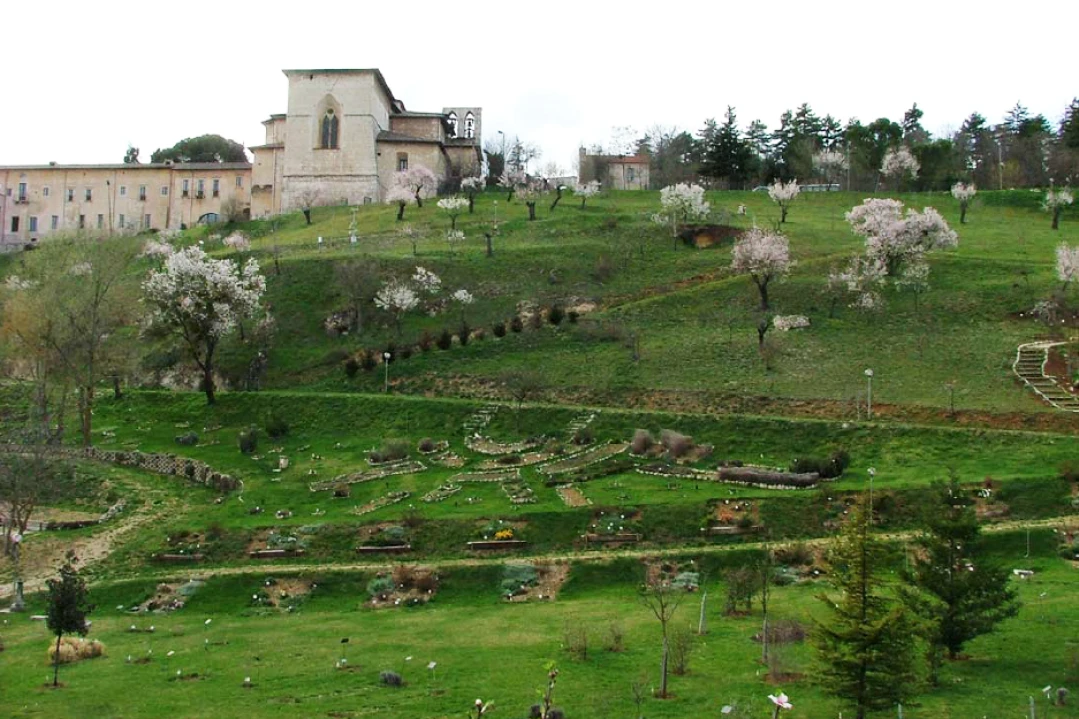The Botanical Garden of Collemaggio is located near the church with the same name, on the outskirts of the city of L'Aquila. Originally, the garden was used by the Celestinian monks who lived in the basilica, and then in in 1965 it began property of the Faculty of Mathematical, Chemical, Physical and Natural Sciences of the University of L'Aquila.
At the rear of the basilica a garden was created for recreational and ornamental purpose: it was called the Transumanza Garden because that was the original place of departure of the transhumant trip to Puglia. The garden has an area of about eight hectares and is organized into sectors: some of them are the main habitat of Abruzzo, while others gather species with similar characteristics, but not necessarily native.
460 different species are grown or cultivated , including many endemic species of Abruzzo, ancient cultivars of pear, apple and cherry, and some trees with mistletoe (Viscum album), which is normally not that widespread in the Italian botanical gardens.
Main areas of the Garden
Garden of peonies: where the herbaceous and shrub varieties, grown all around the world, can be seen in all their glory.
Succulent: grown in a cold greenhouse realized under a wall, so as to create a sheltered environment for the survival to the harsh winter temperatures.
Saffron Garden: for the tradition of the cultivation of saffron (Crocus sativus) in L’Aquila basin, which dates back to the second half of the thirteenth century.
Arboretum: developed in collaboration with the 8 mountain communities that have provided plants representative of their territory, such as linden (Tilia platyphyllos), white willow (Salix alba), beech (Fagus sylvatica), oak (Quercus cerris ), field and Neapolitan maple (Acer campestre and A.mneapolitanum), downy oak (Quercus pubescens), hornbeam (Ostrya carpinifolia), and the black pine (Pinus nigra).
Butterfly Garden: made with species such as red valerian (Centranthus ruber subsp. Ruber) and summer lilac (Buddleja davidii), named by the British as "butterfly bush".
Spontaneous Elm Forest: consisting of elms adults (Ulmun minor subsp. Minor) that have not been attacked by the Dutch elm disease, a disease caused by a fungus responsible for the mortality of this species in Europe and North America.
Flowerbeds teaching: the area where the morphological and physiological characteristics of the plants are highlighted for educational purposes such as dyeing plants (Isatis tinctoria, Anthemis tinctoria) and toxic plants (the hemlock of Socrates, Conium maculatum, and stramonium, Datura stramonium).
Path for the blind: walkway with the plants located close to stones, interspersed with grass crops. The change of path has the purpose of indicating to blind visitors the presence of the plant, accompanied by a special tag identification of the species in Braille.




